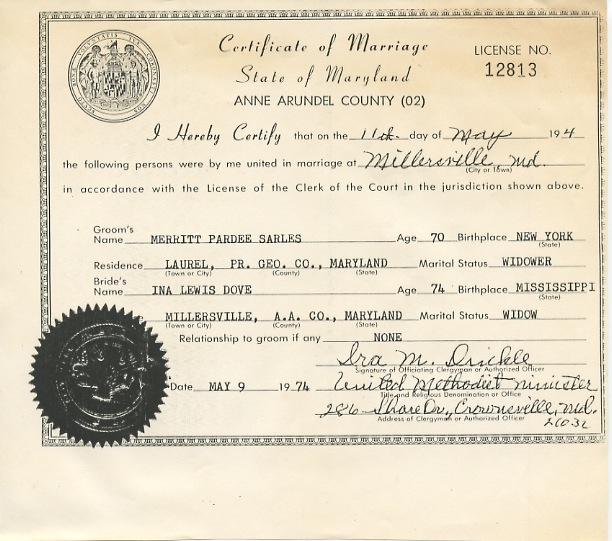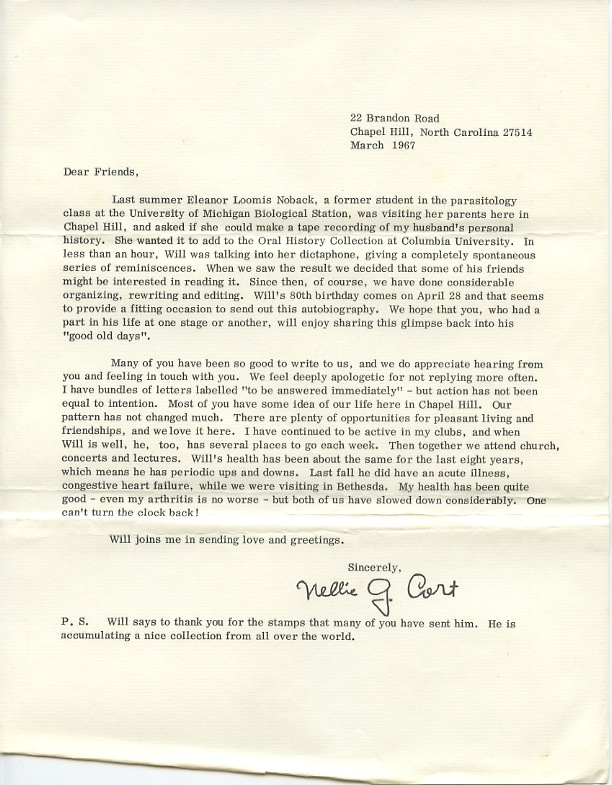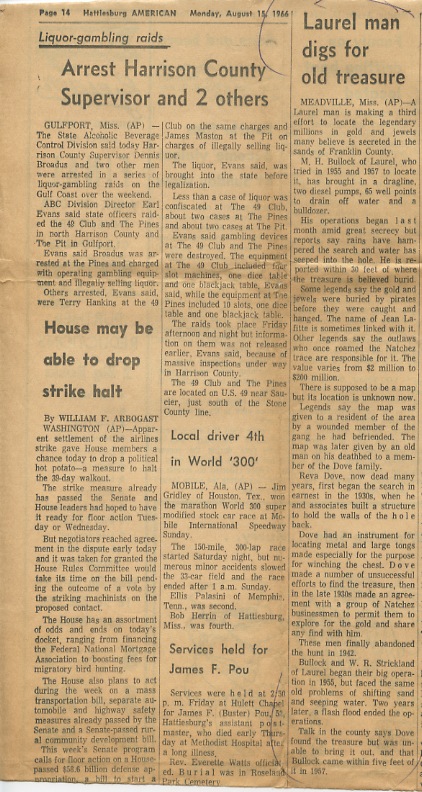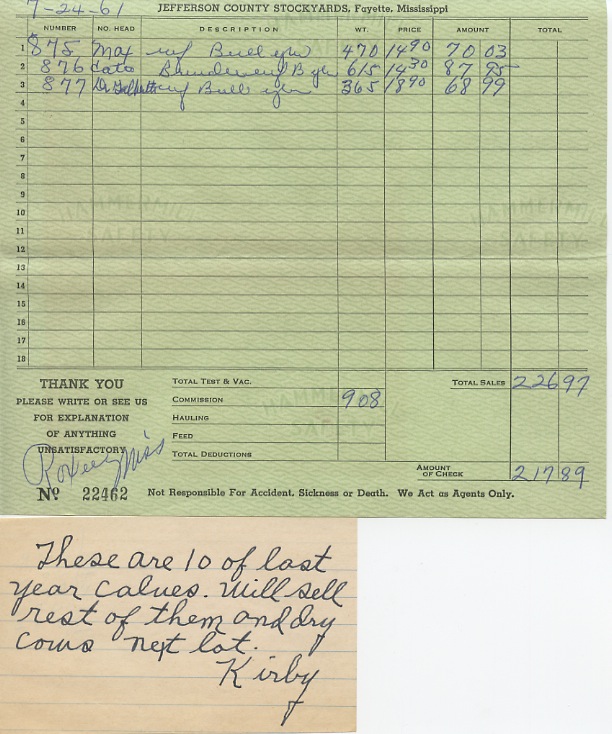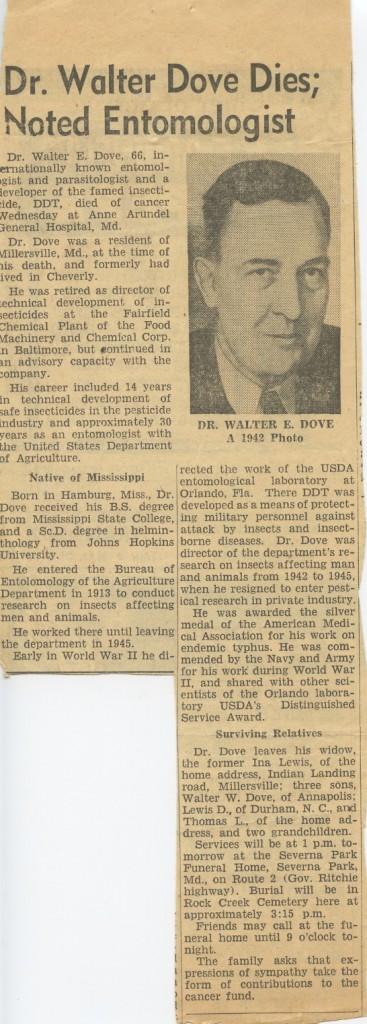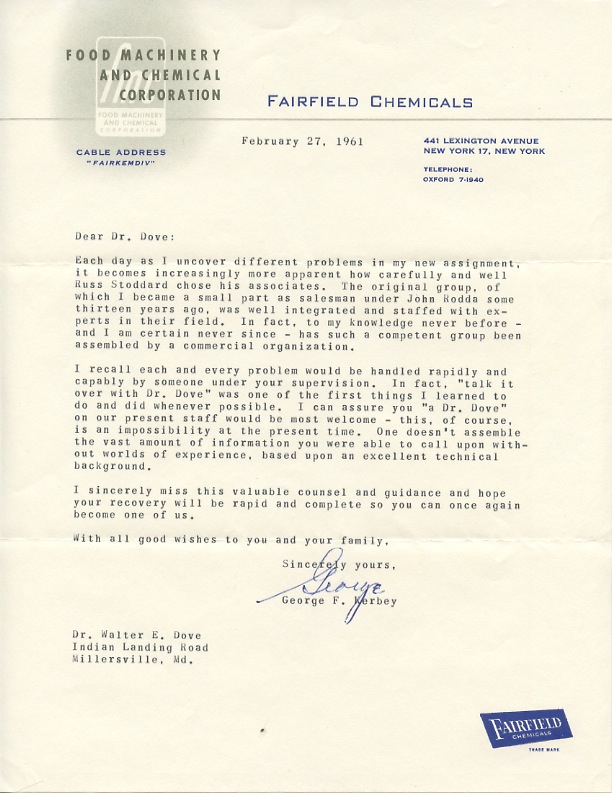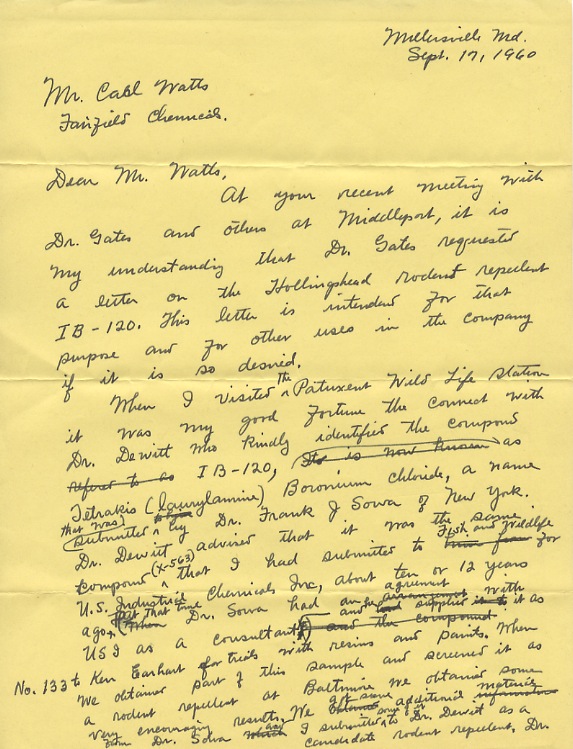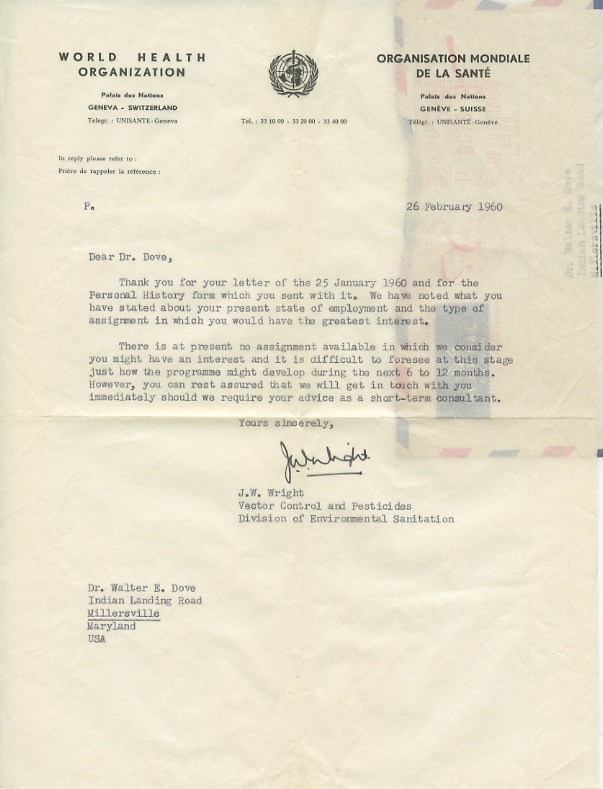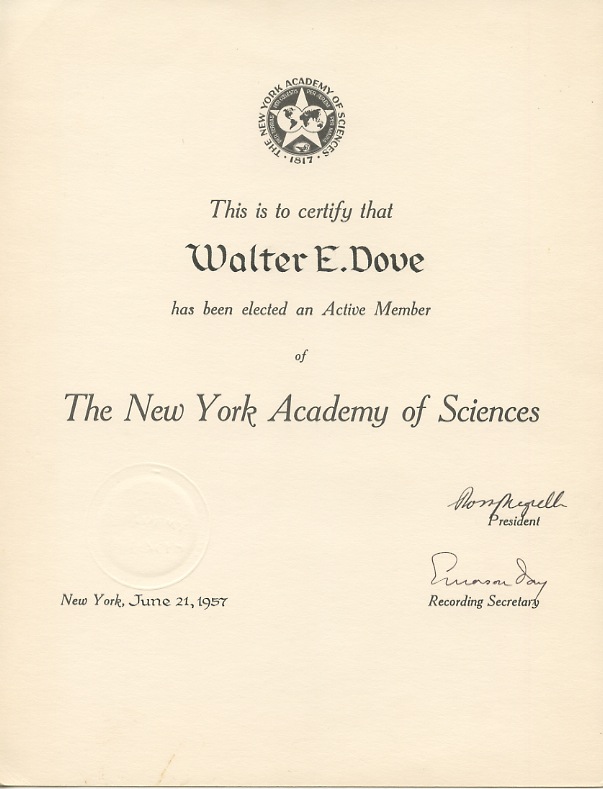Ina died on November 8, 1989. I had just started my senior year at Towson State University in Towson, MD, but was well aware of the events leading up to that, so the death was sad but unsurprising. Here’s an account from her youngest son Tom:
My Mother died on November 8, 1989 at a private nursing home in Bowie, Maryland. She was 90 years old. As you remember, a stray dog knocked her down while she was on her daily one-mile walk earlier in the year and the fall broke her hip. That apparently set off a chain of reactions in her body that led to strokes and her death. I had visited her after work that afternoon and she had gone into a coma. I went home, not realizing she was so near death.
[Walter and Ina’s] eldest son, Walter White, took a BS from the University of Maryland, became an electrical engineer, married and had three children. The middle son, Lewis Dunbar, took his BS and MS from the University of Maryland and PhD from Duke University and became a biochemist/plant physiologist. He has one son. I took my BS in Zoology from the University of Maryland and MLA from Johns Hopkins. I became a high school science teacher and then a journalist. I am delighted by my two children.

